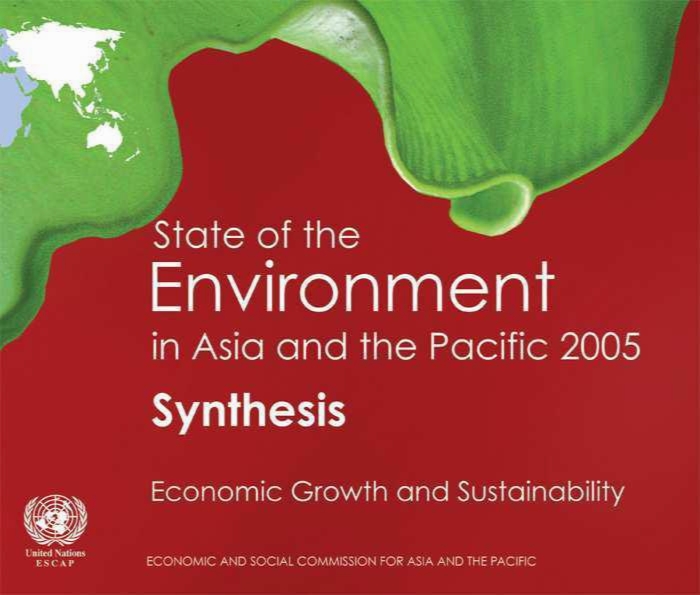State of the environment in Asia and the Pacific, 2005 : synthesis.
- نوع فایل : کتاب
- زبان : انگلیسی
- مؤلف : United Nations. Economic and Social Commission for Asia and the Pacific.
- ناشر : Bangkok : United Nations Economic and Social Commission for Asia and the Pacific.
- چاپ و سال / کشور: 2006
- شابک / ISBN : 9789211204711
Description
What have been the main drivers of environmental change in Asia and the Pacific? 1 Fast economic growth is the most important driver of environmental change in Asia and the Pacific. GDP growth in this region is outstripping world GDP growth, led by developing countries. 1 Despite the rapid economic growth, there are still many unmet needs. Underdeveloped infrastructure is a key development obstacle and one of the most significant poverty traps. 2 Can the region’s natural resource endowment continue to support the current economic growth patterns? 2 Ecological footprinting shows that the Asian and Pacific region is already living above its ‘environmental means’. Despite its relatively low-impact consumption patterns, its carrying capacity is probably already being exceeded. There are increasing signs that environmental sustainability is at risk. 2 In the context of rapid economic growth, what are the key threats to environmental sustainability? 4 The focus on improving environmental performance may be distracting attention from the declining environmental sustainability of economic growth patterns. 4 The signs of unsustainable growth – high future infrastructure costs, an increasing tendency to produce waste and continuing declines in natural capital. 4 The growth of pollution and resource-intensive industry 7 The intensification of agriculture 8 Urbanization and the spread of the global consumer society 10 Increased demand for raw materials, energy and water 12 Increased vulnerability to climate change and natural disasters; however, climate change mitigation action is becoming more and more compatible with energy security and economic objectives. 14 Is declining environmental sustainability a necessary consequence of growth? 17 Economic growth and environmental pressure can be de-linked by promoting more eco-efficient growth patterns. As economies grow, more eco-efficient production may be observed, but greater eco-efficiency of consumption is more difficult to achieve. 17 How can sustainable development be achieved in Asia and the Pacific? 18 Green growth presents a new policy focus to institutionalize more environmentally sustainable economic growth patterns. Adoption of greener growth patterns is more urgent and relevant in the context of fast-growing Asian and Pacific economies than anywhere else in the world. 18 How is the region performing with regard to its international commitments to Millennium Development Goal 7? 20 Target 9. Integrate the principles of sustainable development into country policies and programmes and reverse the loss of environmental resources 21 Target 10. Halve, by 2015, the proportion of people without sustainable access to safe drinking water and sanitation 23 Target 11. By 2020, to have achieved a significant improvement in the lives of at least 100 million slum dwellers 23 What are the key determinants of sustainable development in each subregion? 24 Central Asia and the Caucasus 24 North-East Asia 25 The Pacific 26 South and South-West Asia 28 South-East Asia 29


